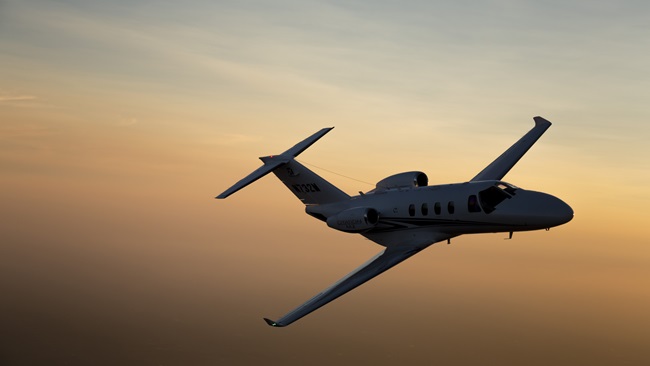Quick Look: Hawker 4000
Super-midsize Hawker is a bargain, but buyer beware

The main departure from legacy Hawkers is the composite fuselage. Building on Beechcraft’s experience with the Starship and Premier airplanes, the 4000’s fuselage is roomy, light, and strong. The cabin has 6 feet of headroom and is 6 feet 5 inches wide with a flat floor. The thin, composite wall allows for a larger interior width compared to traditional aluminum structures. Composite strength also allows for a 9.6-psi pressurization differential that provides a 6,000-foot cabin at FL450.
Another departure from Hawker tradition is the 4000’s aft cargo pit. Earlier Hawkers have forward baggage areas that require all bags to be carried up the boarding steps. The 4000’s aft baggage is loaded from an external door in the tail that can be accessed in flight.
Like most Hawkers, the real appeal is the large cabin, and the 4000 is the biggest of the Hawker brood. Two double-club setups are used in the eight-passenger configuration, or a nine-passenger setup uses a three-place, side-facing divan. There are two closets, a forward galley, and a sizable aft lav.
Up front, pilots will find a five-LCD-screen Honeywell Primus Epic system with dual FMS and EICAS. New to the Hawker marque is a standard autothrottle system. The Pratt & Whitney PW308A engines are FADEC controlled and allow the 4000 to post excellent hot-and-high numbers, unlike legacy Hawkers. During a 2012 evaluation, AOPA Pilot noted the 4000 could take a load of six out of Aspen, Colorado, on a 30-degree Celsius day and fly nonstop to New York.
First-hour fuel burn is around 2,600 pounds and subsequent hours are 1,800 to 1,900 pounds. Range is a solid 3,000 nautical miles. With much of the wing’s trailing edge covered in flaps, the 4000 posts VREF speeds in the range of 115 KIAS, allowing for impressively short landings if needed. Balanced field length for takeoff, however, is 5,068 feet.
If you want to show up in something different, then the Hawker 4000 is for you. Only 69 were built between 2008 and 2012. And among its competition—such as the Gulfstream G200/280 and Bombardier Challenger 300—the 4000 is a bargain. According to aircraft value reference Vref, a 2008 model fetches $3.8 million and a 2012 model is worth $5.6 million, which is a fraction of what its better-known competitors are worth. But buyer beware.
Part of the low value can be chalked up to owners spooked by the airplane’s 12-year development process and potential abandonment of Textron support. Add to that a less-than-stellar maintenance history, especially among early models. They had electrical power distribution units that were troublesome, and overvoltage conditions could trash other electrical components, cascading costs for owners. Several improvement packages have been introduced for the type and by now, most or all aircraft should be modded. Regardless, a thorough prebuy inspection is a must.
With the Hawker 4000, savvy buyers could have a continent-hopping super-midsize business jet for the price of a light jet. The millions saved could buy a lot of Jet A.


